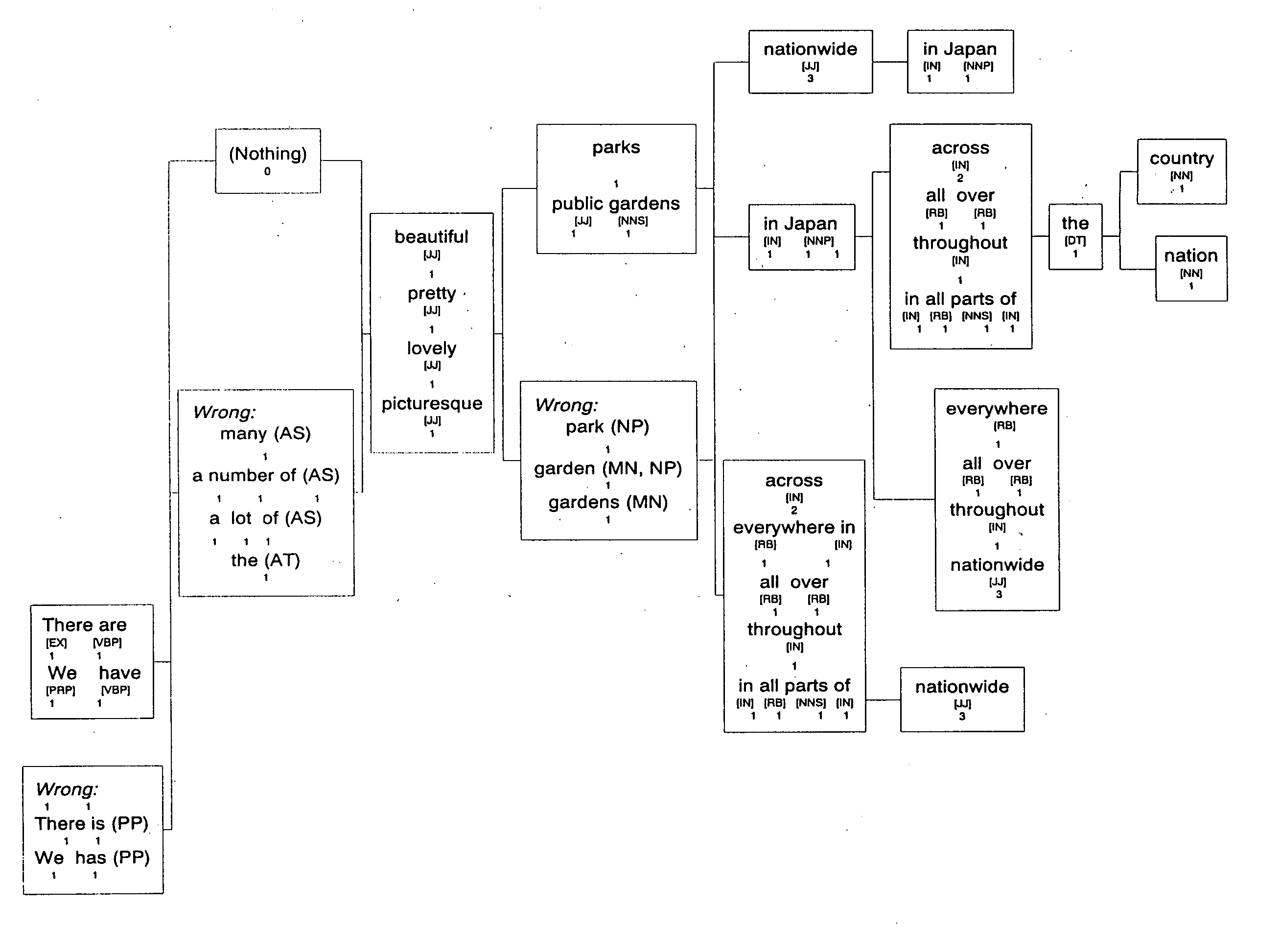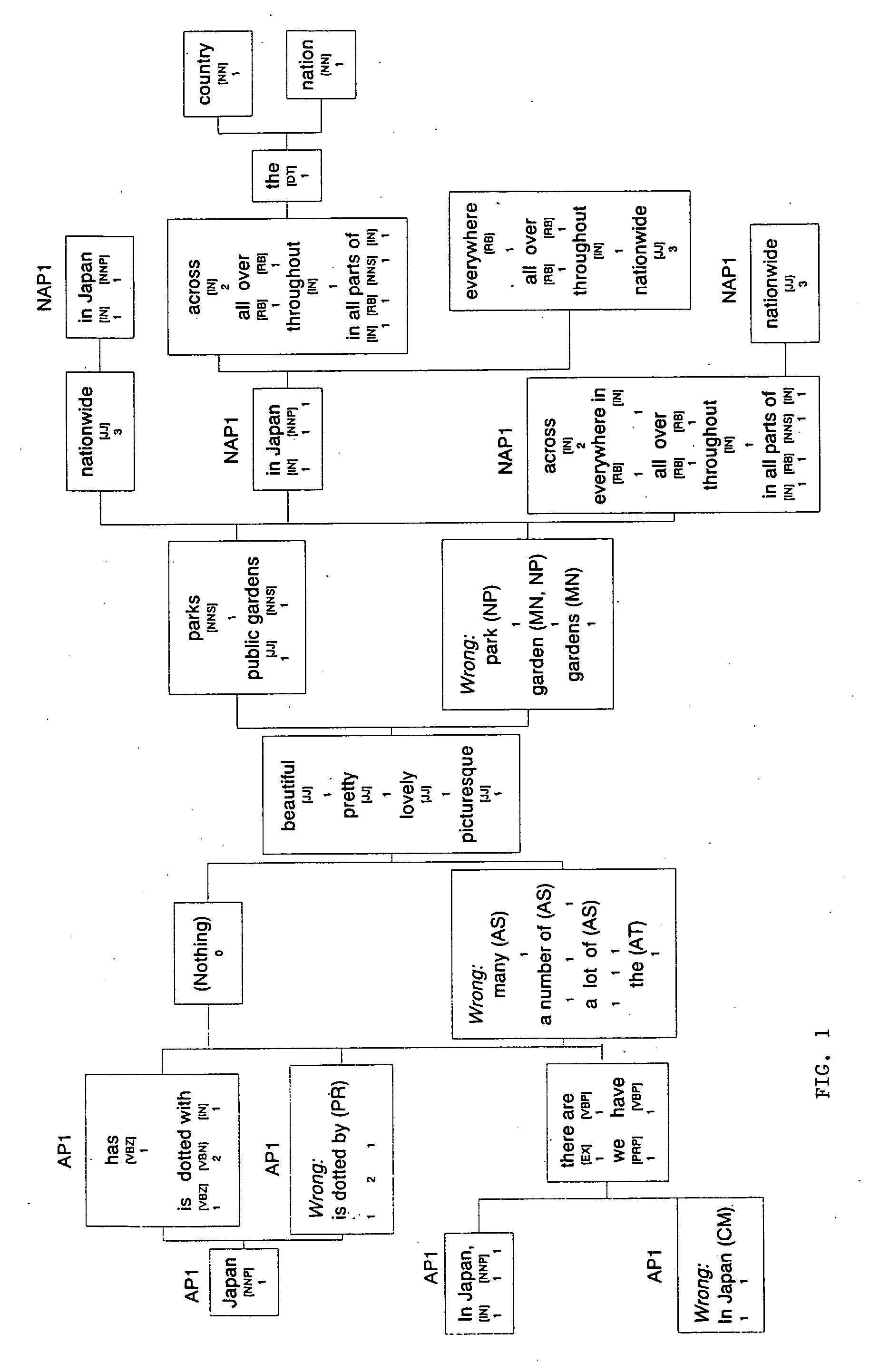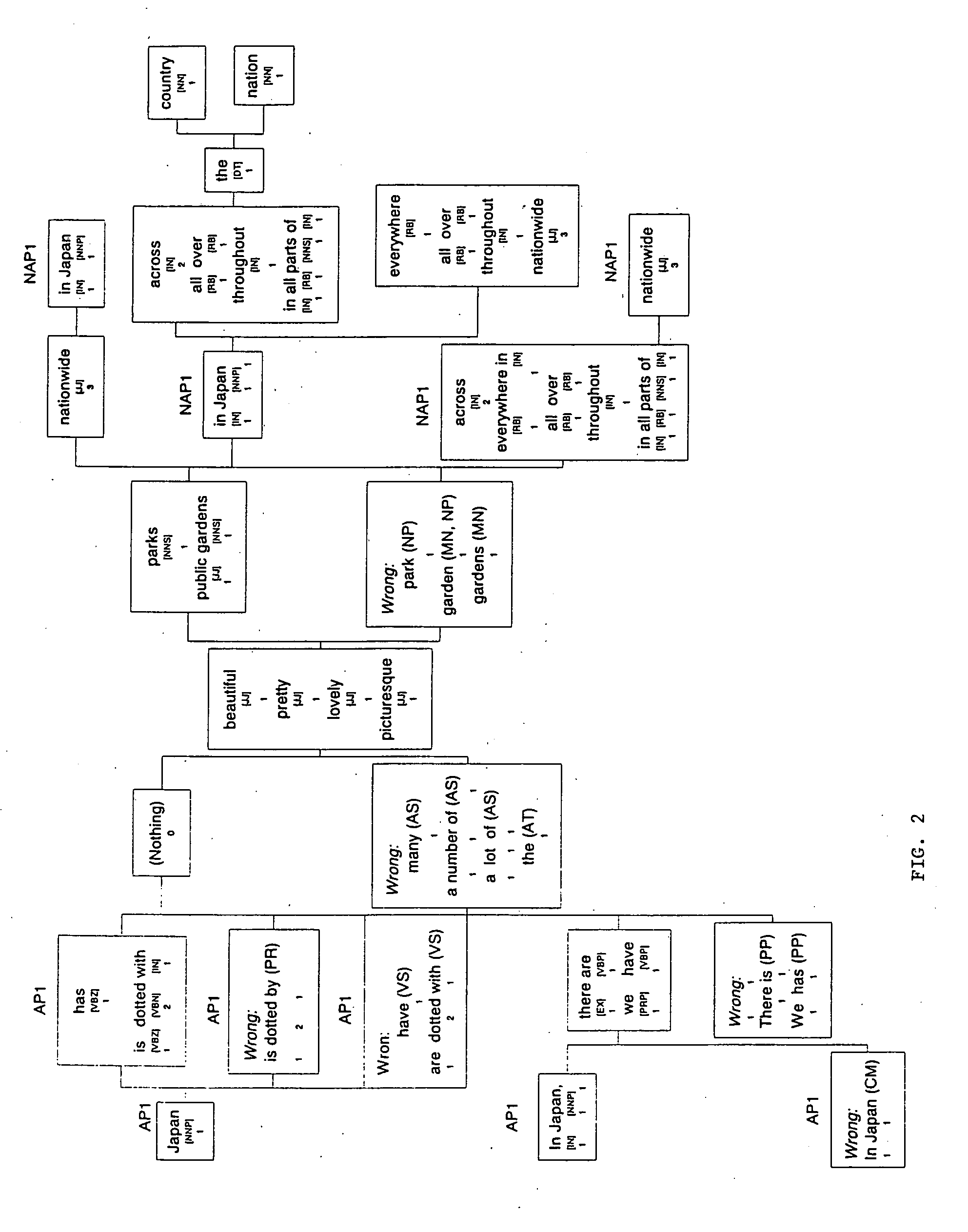Interactive learning system based on template-template structure
- Summary
- Abstract
- Description
- Claims
- Application Information
AI Technical Summary
Benefits of technology
Problems solved by technology
Method used
Image
Examples
Embodiment Construction
Template-Template Structure
[0010] First the term “template-template” will be defined below. The template-template is defined as a special template where some of the nodes are marked with extracting rule-associated symbols allowing the template-template to be expanded into many templates, or a so-called large template if a set of non-connected templates are regarded as one template. Such a set of disconnected templates can now allow a variety of possible translations of a single L1 sentence to form a large single template-template comprising a group of translated L2 sentences. Being an extended template, the template-template scheme allows the template-template to extract one or more of the templates.
[0011] Typically, an extracting rule is always associated with a set of symbols, say {s1, s2, . . . , sn}, and each of the symbols is assigned one or more nodes in the templates. These associated symbols are assigned with one or more values whose function is to represent the style of ...
PUM
 Login to view more
Login to view more Abstract
Description
Claims
Application Information
 Login to view more
Login to view more - R&D Engineer
- R&D Manager
- IP Professional
- Industry Leading Data Capabilities
- Powerful AI technology
- Patent DNA Extraction
Browse by: Latest US Patents, China's latest patents, Technical Efficacy Thesaurus, Application Domain, Technology Topic.
© 2024 PatSnap. All rights reserved.Legal|Privacy policy|Modern Slavery Act Transparency Statement|Sitemap



